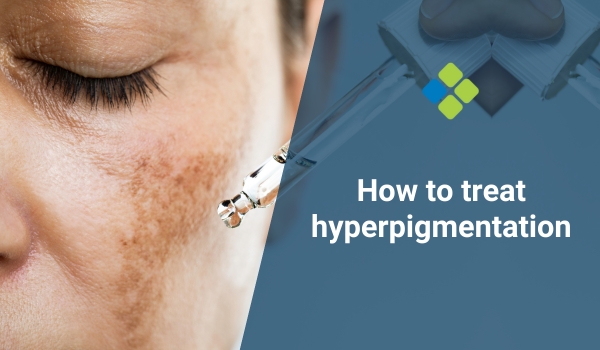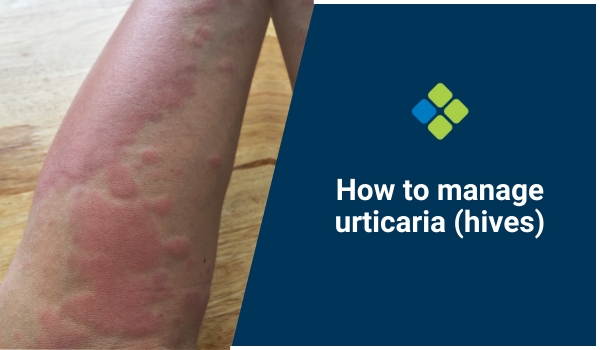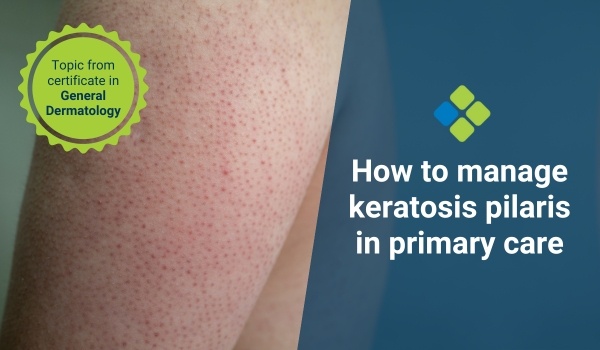How to treat hyperpigmentation
Learn about guidelines for treating hyperpigmentation in the primary care setting to deliver safe and satisfactory outcomes for your patients.

HealthCert Education
Hyperpigmentation is a common concern among patients seeking aesthetic treatments. As a primary care doctor looking to expand your portfolio by incorporating aesthetic treatments, understanding how to effectively treat hyperpigmentation is crucial.
This article aims to provide you with comprehensive guidelines on treating hyperpigmentation in a primary care setting, enabling you to deliver safe and satisfactory outcomes for your patients.
For further information on treating hyperpigmentation, you may be interested in the HealthCert online Professional Diploma program in Aesthetic Medicine.
The importance of adequate training
Before venturing into aesthetic medicine, ensure that you have a solid education. Online courses can be a quality source of information when training for non-invasive and minimally invasive treatments (such as hyperpigmentation).
Study the various types of hyperpigmentation, such as melasma, post-inflammatory hyperpigmentation (PIH), and age spots. Familiarise yourself with the underlying causes, risk factors, and treatment options available.
Before treating hyperpigmentation
Assess patient eligibility
Thoroughly assess patients to determine their eligibility for hyperpigmentation treatments. Consider factors such as skin type, medical history, presence of active skin conditions, and any contraindications for specific treatments. Conduct a comprehensive consultation, including a detailed medical history and skin assessment, to identify any potential risks or complications.
Establish realistic expectations
Discuss realistic outcomes and set appropriate expectations with your patients. Hyperpigmentation treatments are not always predictable, and results may vary depending on various factors. Inform patients about the potential for multiple treatment sessions and the time required to achieve satisfactory results. Emphasise the importance of sun protection and post-treatment care for maintaining outcomes.
Treatment options for hyperpigmentation
Topical treatments
Consider topical treatments as a first-line approach for mild cases of hyperpigmentation. Recommend over-the-counter or prescription topical products containing ingredients such as hydroquinone, retinoids, azelaic acid, kojic acid, or vitamin C. Advise patients on proper application techniques, potential side effects, and the need for consistent usage.
Chemical peels
Chemical peels can be effective in treating hyperpigmentation, particularly for PIH and superficial melasma. Familiarise yourself with different peel types, such as alpha hydroxy acids (AHAs), beta hydroxy acids (BHAs), and trichloroacetic acid (TCA) peels. Start with lower concentrations and gradually increase based on patient response. Always perform a patch test and provide patients with pre-treatment and post-treatment care instructions.
Laser and light-based therapies
Laser and light-based therapies, such as intense pulsed light (IPL) and fractional lasers, can yield excellent results for hyperpigmentation. Acquire appropriate training and certification in these procedures before offering them. Understand the various devices available, appropriate settings for different skin types, and potential side effects. Proper patient selection and customisation of treatment parameters are crucial for optimal outcomes.
Combination therapy
Consider combining multiple treatment modalities to address hyperpigmentation comprehensively. Combination therapy may include topical treatments, chemical peels, and laser or light-based therapies, based on the patient's specific needs and response. Tailor treatment plans to individual patients, taking into account their skin type, severity of hyperpigmentation, and lifestyle factors.
Sun protection to prevent hyperpigmentation
Educate your patients about the critical role of sun protection in preventing and managing hyperpigmentation. Advise the use of broad-spectrum sunscreen with an SPF of 30 or higher, and recommend sun-protective measures such as wearing wide-brimmed hats and seeking shade. Emphasise that consistent sun protection is essential, regardless of the chosen treatment.
As a primary care doctor providing aesthetic treatments, understanding how to treat hyperpigmentation is vital. By educating yourself, assessing patient eligibility, setting realistic expectations, and employing appropriate treatment modalities, you can effectively address this common concern.
Remember to prioritise patient safety, provide thorough pre- and post-treatment care, and stay updated with advancements in the field to deliver optimal outcomes for your patients.
Learn how to treat hyperpigmentation in the HealthCert online Professional Diploma program in Aesthetic Medicine.
- Dr Rosmy De Barros
References
Desai SR. Hyperpigmentation therapy: a review. J Clin Aesthet Dermatol. 2014 Aug;7(8):13-7. PMID: 25161755; PMCID: PMC4142815.
Sarkar R, Arsiwala S, Dubey N, Sonthalia S, Das A, Arya L, Gokhale N, Torsekar RG, Somani VK, Majid I, Godse K, Ravichandran G, Singh M, Aurangabadkar S, Salim T, Shah S, Sinha S. Chemical Peels in Melasma: A Review with Consensus Recommendations by Indian Pigmentary Expert Group. Indian J Dermatol. 2017 Nov-Dec;62(6):578-584. doi: 10.4103/ijd.IJD_490_17. PMID: 29263530; PMCID: PMC5724304.
Arora P, Sarkar R, Garg VK, Arya L. Lasers for treatment of melasma and post-inflammatory hyperpigmentation. J Cutan Aesthet Surg. 2012 Apr;5(2):93-103. doi 10.4103/0974-2077.99436. PMID: 23060704; PMCID: PMC3461803.

 1800 867 1390
1800 867 1390





